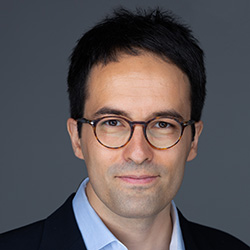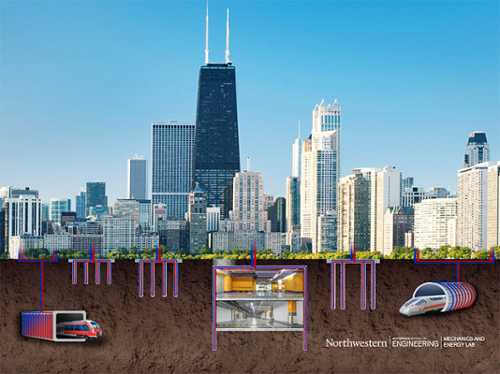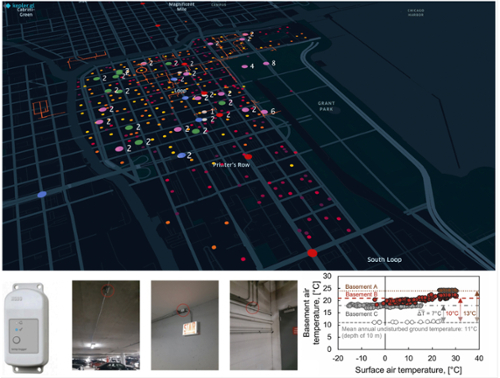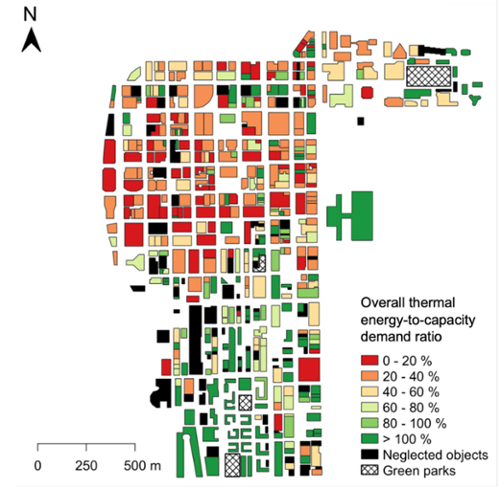The Untapped Energy Beneath our Feet
 The shallow subsurface is a tremendous source of heat that can be used to meet the thermal energy requirements of buildings – a major actor in the global emissions of greenhouse gases due to the almost exclusive reliance on fossil-fuels. In cities, there are two sources of such heat in the ground. The first source consists of waste thermal energy rejected in the ground by buildings, facilities, and underground transport, which is responsible for so-called subsurface urban heat islands. The second source is renewable and weather-insensitive geothermal energy, continuously and ubiquitously accessible everywhere on earth.
The shallow subsurface is a tremendous source of heat that can be used to meet the thermal energy requirements of buildings – a major actor in the global emissions of greenhouse gases due to the almost exclusive reliance on fossil-fuels. In cities, there are two sources of such heat in the ground. The first source consists of waste thermal energy rejected in the ground by buildings, facilities, and underground transport, which is responsible for so-called subsurface urban heat islands. The second source is renewable and weather-insensitive geothermal energy, continuously and ubiquitously accessible everywhere on earth.
Alessandro Rotta Loria, an assistant professor of Civil and Environmental Engineering, is working to make the thermal energy supply of cities more sustainable through the use of the untapped thermal energy potential of the shallow subsurface. A considerable amount of this effort is concentrated on developing fundamental research activities that can contribute to tomorrow’s engineering solutions to harvest and store energy through the ground, and takes place within the Mechanics and Energy Lab that Alessandro leads in CEE at Northwestern. A comparable effort is concentrated in the training of the future engineering workforce, and takes place through the development of his new course “Energy Geostructures and Geosystems” (CIV_ENV_393).

The course Energy Geostructures and Geosystems aims to bring innovation to the center of the training of NU undergraduate and graduate students. In Winter Quarter 2021, students developed a visionary intervention for the Chicago Loop district, consisting of the retrofit of building basements, parking garages, train tunnels, and freight tunnels into energy geostructures and the use a geothermal panel patented by Alessandro that can transform any earth-contact structure into a heat exchanger to harvest or store thermal energy through the ground. In this design, the subsurface was employed to fundamentally enhance the sustainability of the energy flows characterizing buildings and facilities across the Chicago Loop – the densest city district in the US after Manhattan.
Interconnected to this course and the research activities of Alessandro is the development of an unprecedented sensing network in subsurface of Chicago to quantify the subsurface heat island phenomenon, an endeavor supported by the Murphy Society. This sensing network represents an Internet-of-Things solution composed of wireless temperature sensors deployed in building basements, underground parking garages, pedways, the ground and other subsurface environments of the City, presently within the Loop and targeting the larger city boundaries. The network provides hundreds of subsurface temperature measurements per day, allowing us to quantify the waste heat that could be reutilized to meet part of the heating consumption of buildings through energy geostructures and other shallow geothermal technologies. Collected data indicate a remarkable intensity of waste heat emissions coming from underground environments, with temperatures of up to 24.5°C measured so far in the subsurface, as compared to the typical undisturbed ground temperature of 11°C that characterizes Chicago.

Findings from the student projects indicate that about 60% of the thermal energy consumption of the Loop could be met by retrofitting existing underground structures into energy geostructures. This technology innovation could be deployed in the very near future in Chicago and other cities across the world. In a scenario where cities will be at the center of crucial changes in their engineering and architecture above the ground due to the Covid-19 pandemic, Prof. Rotta Loria believes that significant changes can also come from below the ground, with the potential to disrupt the energy flows in present and future urban areas.

